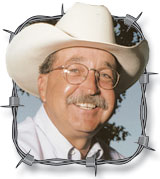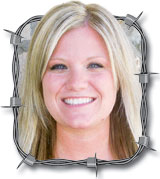From time to time, I like to look back and reflect on the many changes that have taken place in the cattle industry over the past 50 years. At times, it seems almost unrecognizable to me, as we’re now confronted with embryo transfer, sexed semen, genomic testing, DNA analysis, and EPDs for every trait imaginable, just to mention a few. Most of the advancements have benefited cattlemen immensely, but….. when I was a youngster, there was not a veterinarian on duty at the livestock auction barn.
When a cow came in the auction ring and a bidder wanted to know if she was pregnant, the seller might holler out that she either was or wasn’t. If the seller wasn’t in attendance or mute (or of questionable character) the ringman would simply coax the cow up into a V, created by the sorting gate and sales ring, and perform the “bumping technique.”
For those unfamiliar with the term, the ringman would press against the lower side of the animal, directly behind the ribs, with the backs of his fingers and an extended thumb, in an effort to feel for the presence of an unborn calf. At our little auction, the ringman and salebarn owner, T.D. Crawford, would proclaim either, “Yep, there’s a calf in there,” (meaning she was in the second trimester) or, “Yep, she’s close,” (meaning she could calve anytime from that night, to three months from then). If he simply shook his head, it meant he couldn’t feel a calf. I never knew him to be wrong.
Many years after that, auction barns were required to have a veterinarian or their assistant available to palpate the cows to determine their stage of pregnancy. After gloving up and entering the cow from the business end, the good doctor would then apply a glued-on sticker to identify such pregnancy. A blue tag meant she was in the first trimester; a red tag proclaimed her in the second stage; a green tag placed her in the last three-month period before calving. The system is good, but only to the degree of skill possessed by the technician. Several years ago, I bought forty, red-tag cows during the month of June. The first one calved two weeks after I unloaded them and the last one calved in February, and their calving was pretty evenly spaced for seven months.
Having recently related that story to a neighbor, he declared that the place where he purchased replacement cows had instituted ultrasound technology to determine the stage of pregnancy and knew not just the trimester, but, in fact, which week the cow would become a mother. Thinking back on the ultrasound pictures of my two sons that I have saved for 30 years, I was quite impressed that we’re using the same science for the livestock industry, until…
I drove by that same neighbor’s pasture the other day and saw a cow and her new calf both standing next to the fence. The new baby was nursing like there was no tomorrow, as a frothy milk foam was covering the calf’s mouth and the mother’s udder, and on the cow’s right side…a bright RED tag.







